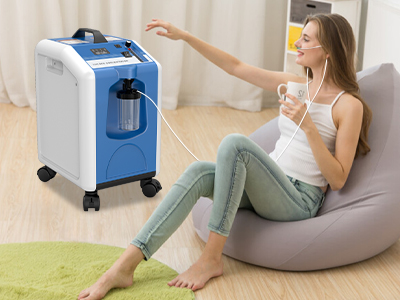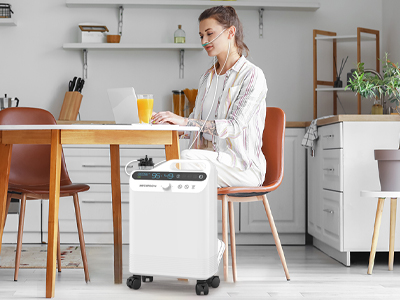18 Mar 2024
Oxygen concentrators operate by drawing in ambient air, filtering out nitrogen, and concentrating the oxygen for delivery to the user through a nasal cannula or mask.

Regulatory Requirements
A. FDA Regulations
Oxygen concentrators are classified as medical devices by the FDA and are subject to regulatory oversight to ensure their safety and efficacy.
B. Prescription Requirement
In most cases, a prescription is required to obtain an oxygen concentrator due to the potential risks associated with improper use.
Medical Necessity
A. Determining the Need for Oxygen Therapy
The decision to prescribe an oxygen concentrator is based on the patient's medical condition, oxygen saturation levels, and the presence of symptoms related to hypoxemia.
B. Role of Healthcare Providers
Healthcare providers, such as physicians or pulmonologists, assess the patient's condition and determine the necessity for oxygen therapy through clinical evaluation and diagnostic testing.
Prescription Process
A. Consultation with Healthcare Provider
Patients seeking an oxygen concentrator typically undergo a consultation with a healthcare provider to discuss their symptoms, medical history, and oxygen needs.
B. Evaluation of Medical History and Symptoms
The healthcare provider evaluates the patient's medical history, conducts a physical examination, and may perform diagnostic tests to assess oxygen levels and determine the appropriate treatment.

Prescription Criteria
A. Criteria for Prescribing Oxygen Therapy
Prescription criteria for oxygen therapy include low arterial oxygen levels at rest, during exertion, or during sleep, as well as symptoms of hypoxemia such as shortness of breath or fatigue.
B. Assessment of Oxygen Saturation Levels
Healthcare providers use pulse oximetry or arterial blood gas analysis to measure oxygen saturation levels and determine the need for supplemental oxygen therapy.
Types of Oxygen Concentrators
A. Stationary Oxygen Concentrators
Stationary oxygen concentrators are designed for use at home or in clinical settings and are powered by electricity.
B. Portable Oxygen Concentrators
Portable oxygen concentrators are lightweight and battery-operated, allowing users to maintain mobility while receiving oxygen therapy.
Accessing Oxygen Concentrators
A. Medical Supply Stores
Oxygen concentrators can be obtained through medical supply stores, which may require a prescription for purchase or rental.
B. Online Retailers
Some online retailers offer oxygen concentrators for sale or rental, but patients should ensure that they comply with regulatory requirements and consult with a healthcare provider before purchasing.
Conclusion
A. Importance of Medical Guidance
Obtaining a prescription for an oxygen concentrator ensures that the therapy is tailored to the patient's specific needs and is used safely and effectively.
B. Compliance with Regulatory Requirements
Adhering to regulatory requirements and obtaining medical guidance from healthcare providers are essential steps in accessing and using oxygen concentrators for the management of respiratory conditions.
Keywords: oxygen concentrator
Originally published 18 Mar 2024, updated 18 Mar 2024.